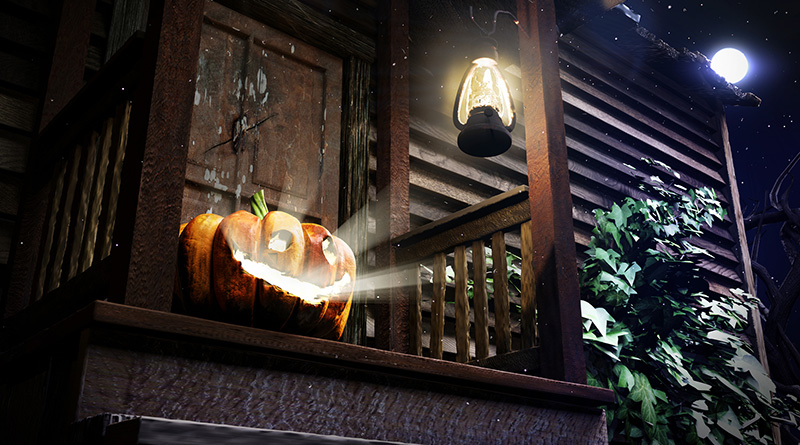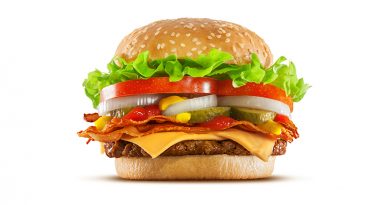Hallowe’en and fear of an American Planet
To those of a certain vintage, Hallowe’en used to mean, at the very most, nothing more than a few bobbing apples and a viewing of Carry On Screaming. It certainly was not the hyper commercialised two month long cultural event which sees our major supermarkets replace their ‘back to school’ stock with pumpkins and witches costumes in early September.
It’s not just the supermarkets either – last week, the BBC had a Strictly Come Dancing “dance of the dead” special while Phillip Hammond’s 29th October budget was labelled the “Hallowe’en budget” by the Sun newspaper.
Then there are the annual reports of badly organised events exploiting beleaguered parents, and the sale of inappropriate attire. Last year there was outrage over costume of Anne Frank marketed alongside those for ghouls and wizards while this year online store Masquerade invited customers to dress up as convicted killer Oscar Pistorius. As the Daily Mail reported, The ‘Blade Gunner’ outfit allowed buyers to dress as the athlete who shot girlfriend Reeva Steenkamp dead in his South Africa home on Valentine’s Day in 2013.It consisted of a green running outfit of a vest and shorts, and included boot cover ‘blades’ and a gun.
We are definitely a long way from the historical celebration of Hallowe’en with its roots in Celtic paganism. According to Cardiff University’s Juliette Wood, in pre-Christian times, festivals celebrating the end of harvest and start of winter probably took place in Wales. She told BBC Wales, Neil Prior:
“It would be a time to pay-off the seasonal workers on the farms, and bid farewell to the departed, both living and dead. The night would be celebrated with a feast of stwmp naw rhyw, a mash of nine different root vegetables with milk, butter, salt and pepper.”
Now it’s hyper commercialism. As market researchers Conlumino pointed out in 2015, Hallowe’en has become the UK’s second biggest party night after New Year’s Eve. And, according, to Statista, the online provider of market and consumer data, spending on associated products (fancy dress, decorations, toys, confectionery and other food and drink items) by UK shoppers reached £400 million in 2017 with that number expected to rise to £418 million this year. Talking of pumpkins and costumes, its estimated that after the celebrations are over 18,000 tonnes of edible pumpkin are sent to landfill and 7 million Halloween costumes end up in the bin.
Clearly, Hallowe’en has become an increasingly valuable festival event seen by retailers as the doorway to Christmas. It’s also about targeting the inner child in the adult. As Sascha Cordes senior brand manager at Budweiser UK told Marketing Week magazine:
“The fact that we’ve seen such strong sales growth for beer on Halloween proves it isn’t just an occasion for kids. People of all ages want to have a unique experience and adults will spend big on great experiences. This isn’t just a US trend anymore either – we’re now activating major campaigns in China and all across Europe.”
Its millennials (those people reaching young adulthood in the 21st century) who are at the heart of the “new” Hallowe’en. As academic Linus Owens states, those between 18 and 34 years old participate in festivities at the highest rate and they’re also the holiday’s biggest spenders, shelling out over twice as much on their costumes as older adults and children.
For decades Hallowe’en has been considered as an American phenomenon. It can be seen as a way in which the US demonstrates its “soft power” – the expression coined by Joseph Nye to express the ways in which US influence goes beyond its military capabilities. This is a form of cultural imperialism, that is to say the way in which a dominant culture seeks to impose its practices and norms on weaker ones. We only have to note how the new moneyed middle classes in China have embraced Coca Cola, McDonald’s, Disney and Nike to see how this works. For Chinese consumers, the purchase of American goods indicates social mobility, affluence and success.
So there’s certainly a tendency in the UK to be sniffy about Hallowe’en, or at least the commercialisation of it. In 2016 a YouGov poll stated that 45 per cent of adults believe Hallowe’en is an unwelcome American cultural import. A year earlier, journalist Grace Dent wrote that:
There is nothing remotely British about the ready ease of scooping soft, pliable flesh from a jubilantly coloured pumpkin to form a 3-D rendition of a Pixar character, then placing it on the doorstep with a bowl of candy to delight passing children. Too simple; too sociable; too American.
And even if this view is popular, as the years pass by it is becoming less so. Nonetheless, historically there has been a curious distrust of American culture which sits alongside our rapacious absorption of it. As novelist Will Self has put it – there’s a British stuffiness that delights in putting down all things American as cheap, brash and overly sexualised. The gaudy and shallow vulgarity of the Trump era therefore allows us to reembrace our superiority and exhibit our social arrogance.
It’s certainly true that as Britain’s global status has diminished, the profile of the U.S. has risen. Perhaps that’s the root of it – we hate it when our friends become successful. Even if we do join in the celebrations.


